As a BetterHelp affiliate, we receive compensation from BetterHelp if you purchase products or services through the links provided
Have you ever felt so overwhelmed by anxiety that it feels like you’re physically unable to move or think clearly? It’s like your brain hits a brick wall; all you can do is stand there, frozen in a moment of pure stress. Welcome to the world of anxiety paralysis—a place where your mind’s alarms blare so loudly that they drown out everything else. This blog post isn’t just another clinical overview of anxiety. It’s a deep dive into what it feels like to be paralyzed by overwhelming stress and, more importantly, how to find your way out of that immobilizing fog.
We’ve all been there at some point. You wake up with a mountain of responsibilities, and instead of tackling them, you find yourself stuck, staring at the ceiling, feeling the weight of the world on your shoulders. Or maybe it’s during a busy workday when your mind suddenly hits a wall, and you can’t seem to focus on even the simplest task. This isn’t just regular stress; it’s like your brain has gone into overdrive and then abruptly slammed on the brakes.
In this post, we’ll explore what anxiety paralysis is, why it happens, and, most crucially, how to cope with it. We’ll look at practical strategies to help you break free from overwhelming stress and regain control of your thoughts and actions.
Key Takeaways:
- Understanding Anxiety Paralysis: It’s more than just feeling stressed; it’s a complete mental and emotional lockdown.
- Recognizing the Signs: Learn to identify the early symptoms before they escalate.
- Practical Coping Strategies: Discover effective techniques to manage and overcome these intense feelings.
- Long-Term Solutions: Explore ways to build resilience against anxiety and prevent future episodes of paralysis.
- Seeking Support: Remember, you’re not alone in this. We’ll discuss when and how to seek help from professionals or support groups.
Stay tuned as we unravel the complexities of anxiety paralysis and arm you with the tools you need to navigate through the fog of overwhelming stress.
Understanding Anxiety Paralysis
What Is Anxiety Paralysis?
Anxiety paralysis is a state where intense anxiety or panic reaches such a debilitating level that it leaves an individual feeling completely immobilized. It’s characterized by an overwhelming sense of helplessness, indecision, and an inability to take action. The mind and body freeze in this state, making even the simplest tasks feel insurmountable.
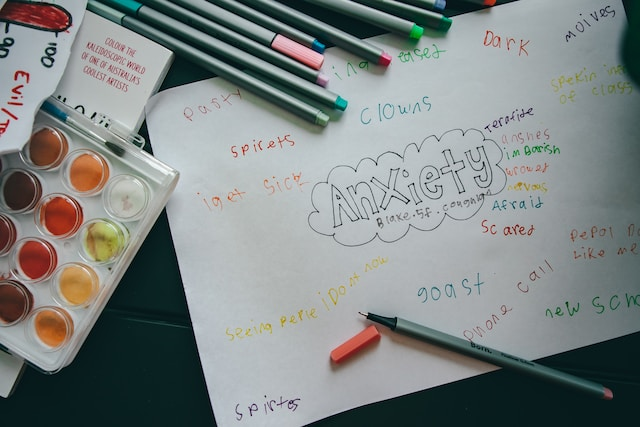
Difference Between Anxiety Paralysis And Regular Anxiety
Anxiety paralysis differs from regular anxiety in its severity and the extent to which it hinders daily functioning. While anxiety is a natural response to stress or perceived threats, anxiety paralysis takes it to an extreme where individuals feel utterly stuck, unable to move forward, and often trapped in a vicious cycle of fear and inaction.
The Impact On Daily Life
Anxiety paralysis has a profound impact on an individual’s ability to function. It can lead to missed opportunities, strained relationships, and a sense of lost potential. Routine tasks become daunting, and decision-making feels impossible, often resulting in a downward spiral of avoidance and inactivity.
Real-Life Examples
Someone might find it nearly impossible to attend social gatherings, apply for a job, or even answer a phone call due to the overwhelming fear and indecision that anxiety paralysis brings. Here are a few real-life examples to illustrate this:
- Job Interview Jitters: Sarah, a highly qualified job seeker, often finds herself unable to attend interviews due to overwhelming anxiety paralysis. The fear of not meeting the interviewer’s expectations and the thought of potential rejection paralyze her, preventing her from pursuing career opportunities.
- Academic Stagnation: Michael, a college student, experiences anxiety paralysis before exams. The pressure to perform well leads to sleepless nights, inability to study, and a panic attack during the exam. As a result, his academic progress stalls, and he’s unable to pursue his career goals.
- Relationship Strain: Lisa struggles with social anxiety, which results in anxiety paralysis in social settings. This has led to strained relationships, as she frequently cancels plans and avoids social gatherings. Her friends and family find understanding her consistent reluctance to participate in events challenging.
- Health Consequences: The constant state of stress caused by anxiety paralysis can have physical health consequences. Insomnia, digestive problems, and weakened immune function are just a few of the issues that can arise.
- Financial Impact: Anxiety paralysis can lead to financial difficulties. For example, someone may procrastinate on managing their finances or avoid essential financial decisions, resulting in debt or missed investment opportunities.
These real-life examples underscore the wide-ranging impact of anxiety paralysis on various aspects of daily life. It’s essential to recognize and address this condition to prevent its pervasive influence and seek support when needed.
Also Read: Understanding Heartbeat in Ear Anxiety: Causes and Management
Causes Of Anxiety Paralysis
Root Causes Of Overwhelming Stress
Anxiety paralysis often stems from a multitude of factors, including high levels of stress, a fear of failure, perfectionism, and a general lack of coping mechanisms. These elements create a perfect storm of pressure that can lead to a state of immobilizing anxiety.
The Role Of Past Trauma And Chronic Stress
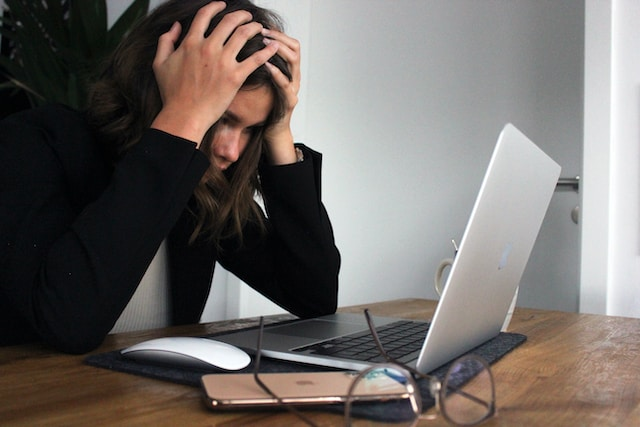
Past trauma and chronic stress can play a significant role in the development of anxiety paralysis. Traumatic experiences can leave lasting emotional scars that resurface during stressful periods, amplifying anxiety. Chronic stress, whether from work, relationships, or other sources, can gradually wear down an individual’s ability to cope, eventually leading to anxiety paralysis.
Triggers And Specific Situations
Common triggers for anxiety paralysis include situations that demand high-stakes decision-making, public speaking, confronting a fear, or taking on a major life change. These triggers intensify anxiety to the point where it becomes paralyzing.
Situations That Exacerbate The Condition
Certain situations can exacerbate anxiety paralysis due to their potential to intensify feelings of fear, helplessness, and indecision. Here are a few examples of situations that can worsen anxiety paralysis:
- High-Stakes Decisions: Situations that demand critical, high-stakes decisions, such as career choices or major life changes, can trigger anxiety paralysis. The fear of making the wrong decision and the pressure of the consequences can render individuals unable to act.
- Public Speaking: For many, public speaking is a common trigger for anxiety paralysis. The fear of judgment or humiliation can lead to a paralyzing fear of stepping onto the stage, making it difficult to speak coherently or perform effectively.
- Confronting Phobias: When individuals with specific phobias are faced with their feared object or situation, anxiety paralysis can be particularly intense. Whether it’s a fear of flying, heights, or spiders, the overwhelming anxiety can lead to a complete inability to engage with the feared stimulus.
- Relationship Challenges: Relationship-related situations, such as initiating difficult conversations, confronting a partner, or navigating social interactions, can exacerbate anxiety paralysis. The fear of rejection, misunderstanding, or conflict can lead to avoidance or indecision.
- Exposure to Trauma Triggers: For individuals with a history of trauma, exposure to triggers related to their traumatic experience can intensify anxiety paralysis. The emotional and physiological responses can become so overwhelming that it immobilizes them.
Understanding the specific triggers for an individual’s anxiety paralysis is crucial for developing targeted coping strategies and seeking professional help when necessary. By addressing these situations, individuals can work toward managing and overcoming anxiety paralysis.
Also Read: Avoid This Pitfall: The Worst Thing to Do to Someone with PTSD
 Recognizing Symptoms
Recognizing Symptoms
Physical And Emotional Symptoms
The physical symptoms of anxiety paralysis can include rapid heartbeat, shallow breathing, sweating, and muscle tension. Emotionally, individuals often experience overwhelming fear, a sense of impending doom, indecision, and a feeling of being trapped by their anxiety.
Understanding Variations In Symptom Manifestation
Symptoms of anxiety and anxiety-related conditions can manifest differently in individuals due to a variety of factors, including genetic predisposition, personality traits, life experiences, and coping mechanisms. Here are some common ways in which symptom manifestation may vary:
- Intensity: Some individuals may experience milder symptoms, while others may have more intense and overwhelming manifestations of anxiety. For example, one person might feel slightly nervous before a presentation, while another may have a full-blown panic attack in the same situation.
- Physical Symptoms: The physical symptoms of anxiety can vary widely. While one person might experience increased heart rate and sweating, another may have digestive issues, muscle tension, or headaches as their primary physical symptoms.
- Emotional Responses: Anxiety can elicit a range of emotional responses. Some individuals may primarily feel fear and dread, while others might experience irritability, restlessness, or a sense of impending doom.
- Coping Strategies: People employ different coping strategies when dealing with anxiety. Some may seek social support, engage in relaxation techniques, or practice mindfulness, while others may resort to avoidance or substance use as their coping mechanisms.
- Behavioral Changes: Anxiety can lead to a variety of behavioral changes. While one person may become more withdrawn and avoid social situations, another might exhibit compulsive behaviors, like repetitive checking or hand washing.
- Duration: The duration of anxiety symptoms can also vary. Some individuals may experience acute, short-term episodes of anxiety, while others might struggle with chronic, long-lasting anxiety disorders.
Understanding these differences in symptom manifestation is important, as it allows for more personalized and effective approaches to managing and treating anxiety-related conditions. It highlights the need for tailored interventions that consider the individual’s unique experience of anxiety.
 The Connection To Mental Health
The Connection To Mental Health
Anxiety paralysis often coexists with various mental health conditions, such as generalized anxiety disorder (GAD), social anxiety disorder, and panic disorder. It can also contribute to the development of mood disorders like depression. The relationship between anxiety paralysis and these conditions underscores the need for comprehensive mental health care.
Also Read: Stay-at-Home Mom Depression: Strategies for Coping and Healing
Importance Of Early Recognition And Intervention
Early recognition and intervention are crucial when it comes to anxiety paralysis. Timely support can prevent the condition from worsening and potentially leading to more severe mental health issues. Encouraging individuals to seek help and providing coping strategies and resources is essential for their well-being and recovery.
 Coping Strategies
Coping Strategies
Self-Help Techniques
Practical strategies for managing anxiety paralysis include mindfulness exercises, grounding techniques, and setting achievable goals. Mindfulness can help individuals stay in the present moment, reducing overwhelming thoughts. Grounding techniques, such as focusing on the senses or deep breathing, can alleviate physical symptoms. Setting small, manageable goals gradually rebuilds confidence and a sense of control.
The Significance Of Self-Care And Stress Reduction
Self-care and stress reduction are crucial for managing anxiety paralysis. Regular physical activity, a balanced diet, and adequate sleep can positively impact mental health. Reducing stress through relaxation methods, such as yoga or meditation, is also valuable for breaking the cycle of anxiety.
Seeking Professional Help
Consulting a mental health professional is essential when anxiety paralysis significantly impairs daily life, or when it co-occurs with mental health disorders. Additionally, professional guidance can provide tailored interventions and support if self-help strategies prove ineffective.
 Treatment Options
Treatment Options
Treatment options for anxiety paralysis can include therapy, such as cognitive-behavioral therapy (CBT) or exposure therapy, to address the root causes and develop coping skills. Medications, like selective serotonin reuptake inhibitors (SSRIs), may be prescribed in severe cases. The combination of these treatments is often effective in helping individuals manage and overcome anxiety paralysis.
Also Read: Relational Therapy: Strengthening Connections and Communication

Spotting the Red Flags: When Anxiety Needs Attention
Recognizing when your anxiety has tipped from manageable to overwhelming is crucial. It’s like having a mental health fire alarm; knowing when it’s sounding off can be the difference between a small flare-up and a full-blown crisis. Let’s dive into some telltale signs that indicate your anxiety isn’t just a passing storm but a condition that needs attention.
- Persistent Worry or Fear: This isn’t just your typical pre-meeting jitters. If you find yourself constantly plagued by worry or fear that doesn’t seem to match the situation’s intensity, it’s a sign.
- Avoidance Tactics: Are you starting to dodge tasks or social situations because they spike your anxiety? When avoidance becomes your go-to strategy, it’s time to reassess.
- Physical Symptoms: Anxiety doesn’t just live in your head. It can manifest physically, with symptoms like rapid heartbeat, excessive sweating, or unexplained aches and pains.
- Sleep Troubles: If your anxiety is keeping you up at night or leading to restless, unsatisfying sleep, it’s a clear red flag.
- Concentration Challenges: When anxiety makes it hard to focus on daily tasks or enjoy activities you usually love, it’s signaling a deeper issue.
- Irritability or Mood Swings: Noticeable changes in your mood, especially if they seem out of character, can be a response to underlying anxiety.
- Feeling Overwhelmed by Small Things: When minor issues feel insurmountable or small decisions feel like significant crises, your anxiety might be reaching critical levels.
If these signs resonate with you, it’s time to take action. Remember, acknowledging that you need help is a sign of strength, not weakness.
Navigating the Road to Recovery: Signs of Progress in Managing Anxiety
When you’re in the thick of dealing with anxiety, it can sometimes feel like you’re running on a treadmill – lots of effort but not much progress. However, the journey of managing anxiety is filled with small victories and subtle signs that you’re moving forward. Let’s explore some indicators that show you’re making headway in your battle against anxiety.
- Improved Sleep Patterns: One of the first signs of progress is often a better night’s sleep. If you start noticing more restful nights, or if falling asleep becomes easier, it’s a big win against anxiety.
- Increased Engagement with Activities: As you manage your anxiety, you might be more willing to participate in activities you once avoided. This renewed interest and engagement is a positive sign.
- Better Stress Management: You’ll notice that situations that once felt overwhelming are now more manageable. This improved resilience is a clear indicator of progress.
- More Consistent Moods: A decrease in mood swings or irritability can show that your emotional regulation is improving, a key step in managing anxiety.
- Enhanced Focus and Concentration: When your mind isn’t constantly clouded by anxiety, you’ll find it easier to concentrate and stay focused on tasks, big or small.
- Physical Symptoms Subside: Less frequent physical manifestations of anxiety (like headaches, stomachaches, or a racing heart) are clear indicators of progress.
- Positive Shifts in Thought Patterns: You might notice a change in how you respond to anxious thoughts. Instead of spiraling, you might find yourself challenging and overcoming these thoughts.
- Better Social Interactions: If socializing starts to feel less daunting and more enjoyable, it’s a sign that your anxiety is becoming more manageable.
- Increased Self-Confidence: As you progress, you’ll likely feel more confident in your ability to handle life’s ups and downs, a sure sign of growth.
- Feeling More Present: Decreased anxiety can lead to a more extraordinary ability to live in the moment rather than worrying about the future or ruminating on the past.
Remember, progress in managing anxiety doesn’t always look like a straight line. There will be ups and downs, but noticing these signs of improvement can be incredibly encouraging. They remind us that our efforts are paying off and that with patience and persistence, anxiety can become a manageable part of life, not an overwhelming one.
 Practical Tips for Managing Anxiety: Strategies for Everyday Life
Practical Tips for Managing Anxiety: Strategies for Everyday Life
Conclusion
Anxiety paralysis is a challenging and often debilitating condition that can profoundly impact an individual’s life. Recognizing its symptoms and understanding its root causes is crucial. Remember that there are practical self-help strategies, such as mindfulness and goal setting, which can aid in managing anxiety paralysis. Seeking professional help when necessary is not a sign of weakness but a courageous step towards healing. In the face of anxiety paralysis, you’re not alone, and there is support available.
Managing anxiety is a journey, and along the way, several practical strategies can make a significant difference. Here are some actionable tips to help you navigate through anxious times:
- Establish a Routine: Routines create a sense of normalcy and predictability, which can be incredibly soothing for an anxious mind. Try to establish regular sleep, meal, and exercise times.
- Practice Mindfulness and Meditation: Mindfulness can help anchor you in the present moment, reducing anxious thoughts about the past or future. Meditation, even for a few minutes a day, can significantly lower anxiety levels.
- Exercise Regularly: Physical activity is a powerful stress reliever. It doesn’t have to be intense; even a daily walk can help clear your mind and reduce anxiety symptoms.
- Limit Caffeine and Alcohol: Both can exacerbate anxiety and even trigger panic attacks in some people. Try to reduce your intake to see if it makes a difference in your anxiety levels.
- Journal Your Thoughts: Writing down your feelings can be a great way to process your emotions and reduce anxiety. It also helps in identifying patterns or triggers in your anxious thoughts.
- Learn Relaxation Techniques: Techniques such as deep breathing, progressive muscle relaxation, or yoga can effectively manage anxiety symptoms.
- Break Tasks into Smaller Steps: If you feel overwhelmed by tasks, break them down into smaller, more manageable steps. This can help reduce the anxiety associated with large or daunting tasks.
- Stay Connected: Talk to friends and family about what you’re experiencing. Social support is crucial in managing anxiety.
- Limit Exposure to Stressful News or Social Media: Constant exposure to negative news or social media can heighten anxiety. Set boundaries for how much time you spend consuming this content.
- Seek Professional Help When Needed: If your anxiety is becoming too much to handle on your own, don’t hesitate to seek help from a mental health professional.
Remember, these tips are not one-size-fits-all. It’s important to experiment and find what works best for you. The key is to be patient and kind to yourself as you navigate through your anxiety. Small steps can lead to big changes over time.
- Left Arm Pain and Anxiety: Understanding the Relationship - November 23, 2023
- Anxiety Paralysis: Coping with Overwhelming Stress - November 23, 2023
- Anxious vs. Nervous: Differentiating Emotions and Responses - November 15, 2023
This site contains affiliate links to products. We will receive a commission for purchases made through these links.


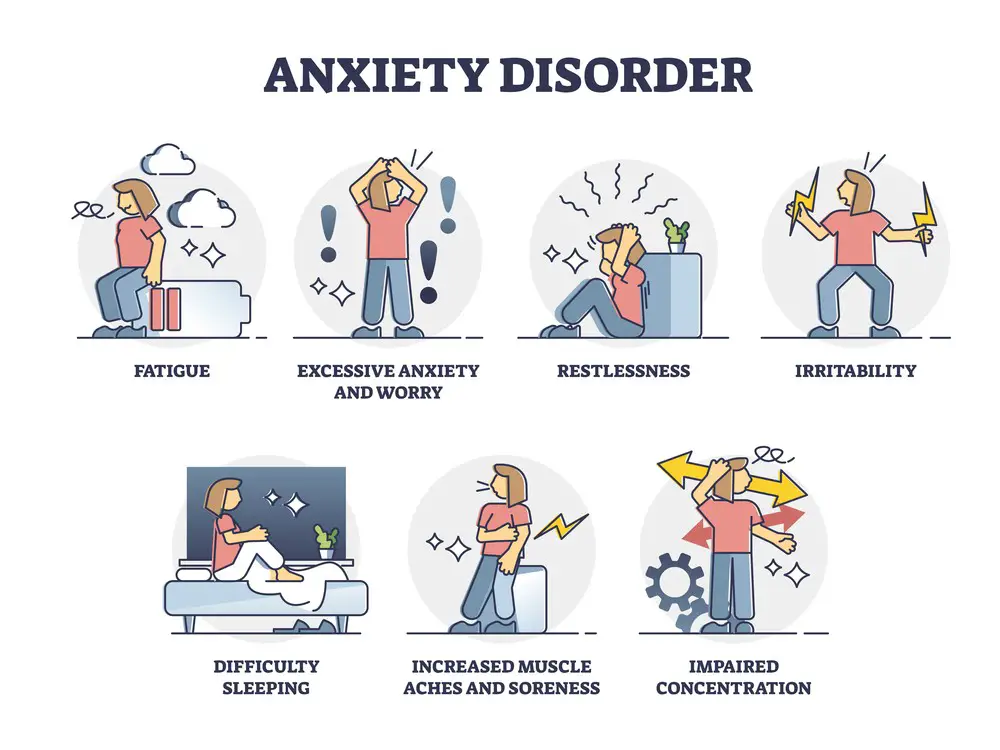 Recognizing Symptoms
Recognizing Symptoms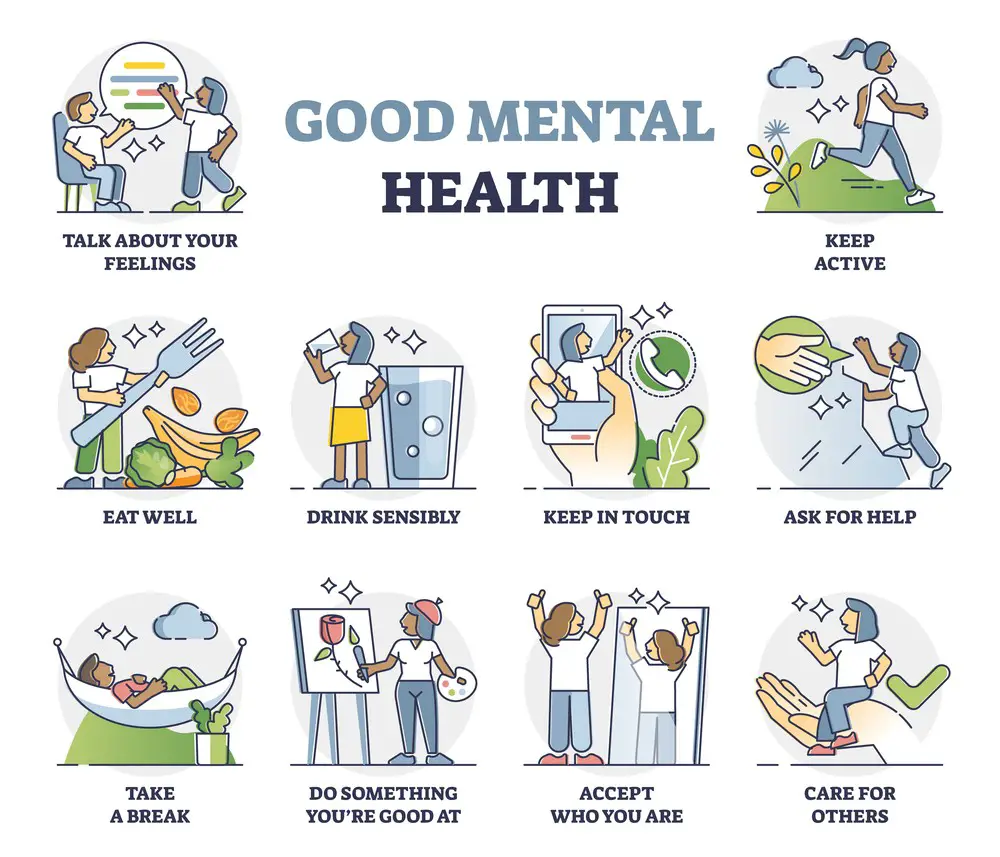 The Connection To Mental Health
The Connection To Mental Health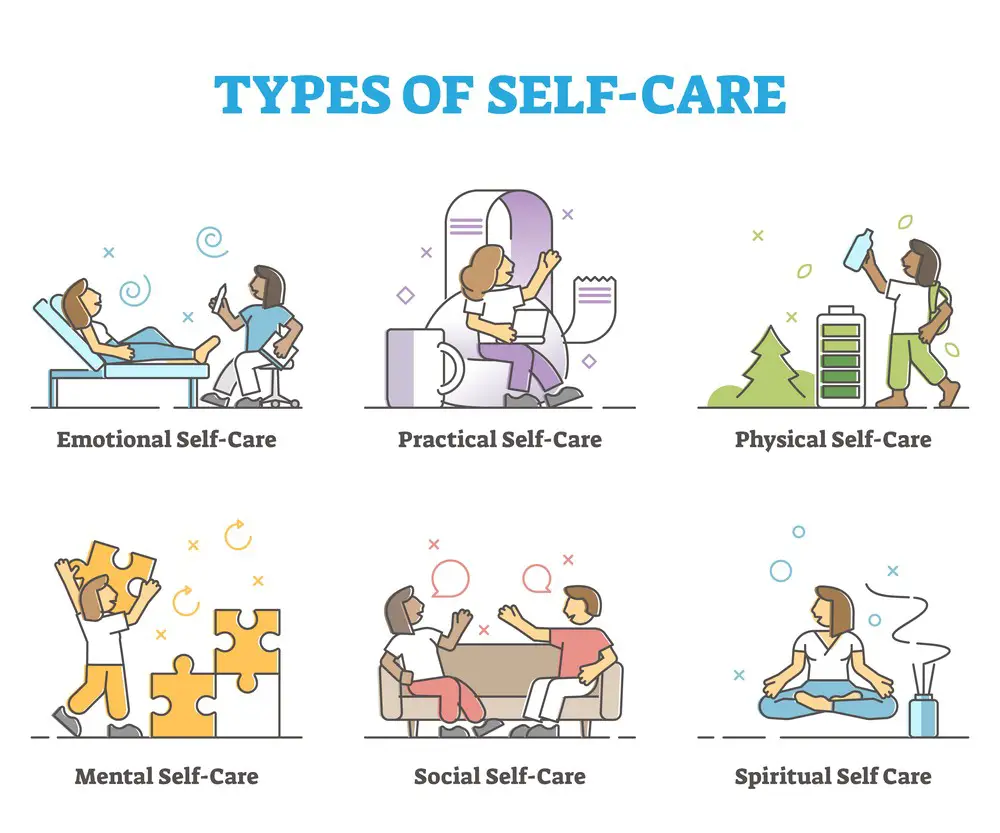 Coping Strategies
Coping Strategies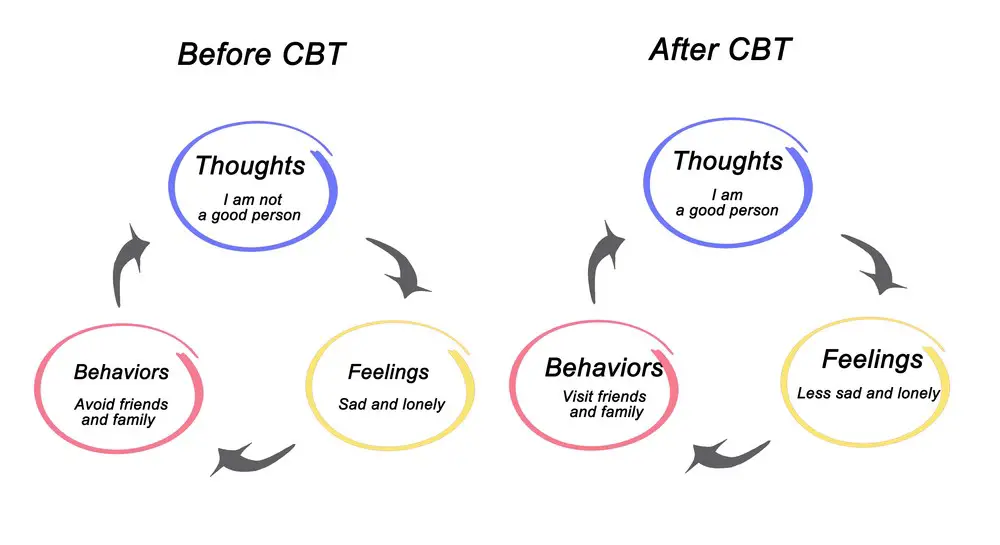 Treatment Options
Treatment Options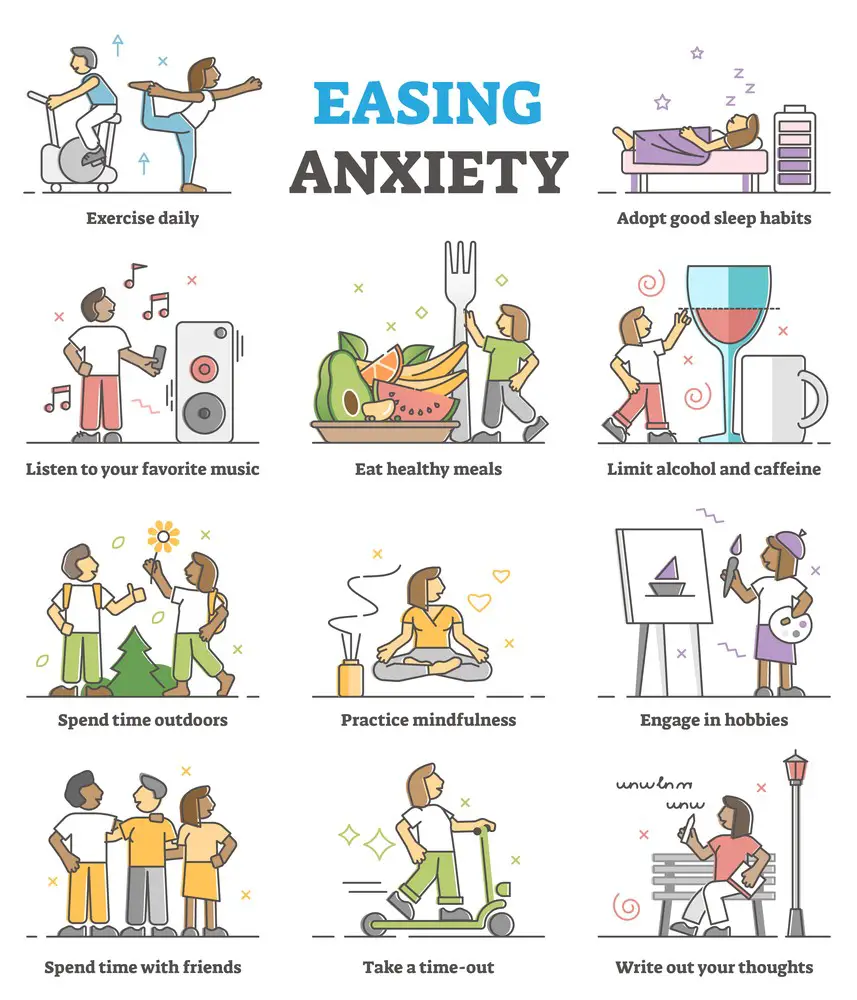 Practical Tips for Managing Anxiety: Strategies for Everyday Life
Practical Tips for Managing Anxiety: Strategies for Everyday Life
